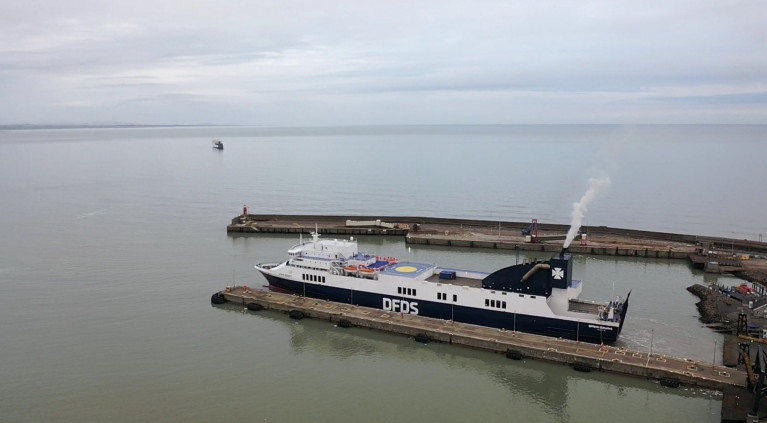Displaying items by tag: DFD roro ferry
The ferryport of Rosslare Europort is to mark another historic maritime milestone this afternoon as a new 'freight' ro-ro route linking Ireland and continental mainland Europe operated by DFDS is to start thus bypassing a post-Brexit UK, writes Jehan Ashmore.
At 1400hrs, the DFDS owned ropax Optima Seaways is to depart loaded with its first cargo of freight trucks and drivers (with individual Covid19 safe cabins) on the near 24-hour route beyond the English Channel to the French port of Dunkirk (Dunkerque) on the North Sea.
Optima Seaways (see recent report) built by Visentini in 1999 and with a capacity for up to 120 trucks and trailer plus drivers, is scheduled to arrive at the mainland Europe port tomorrow, Sunday at 1400hrs, that been Central European Time (CET).
For Irish industry the direct sea route offers a vital alternative to the UK landbridge and customs checks, as Dunkirk represents a key strategic location for hauliers as the French port is a mere 10kms from the Belgium border. In addition neighbouring Netherlands, Luxembourg and Germany. Also truckers can use the motorway network to easily access Paris and to Switzerland and beyond into central Europe.
Operating the DFDS route based on a 6 days a week sailing schedule will involve a further pair of chartered ferries to maintain freight demand. These vessels are Destination Gotland's fast-ropax Visby and Stena Ro Ro's Kerry which is currently at anchor off the Wexford port. The 2001 built Kerry (of same Visentini series), is also to berth in Rosslare Europort today to load for the second outward bound sailing to Belgium set for 2300hrs tonight. The crossing time to the port is to be completed on Sunday night at 2300.
As for the first inbound sailing of Dunkirk-Rosslare-Europort, this will see the deployment of the chartered ropax Visby which Afloat has also tracked based in the Belgium port for several days having made a repositioning voyage from the Baltic Sea.
It should be noted that the most notable difference between the trio of ferries is that the 'Visentini' ropax pair have the Italian shipyard's standard 'stern-loading' only access, whereas the larger Chinese built Visby of 2003 has full drive-through stern and bow door operations.






























































